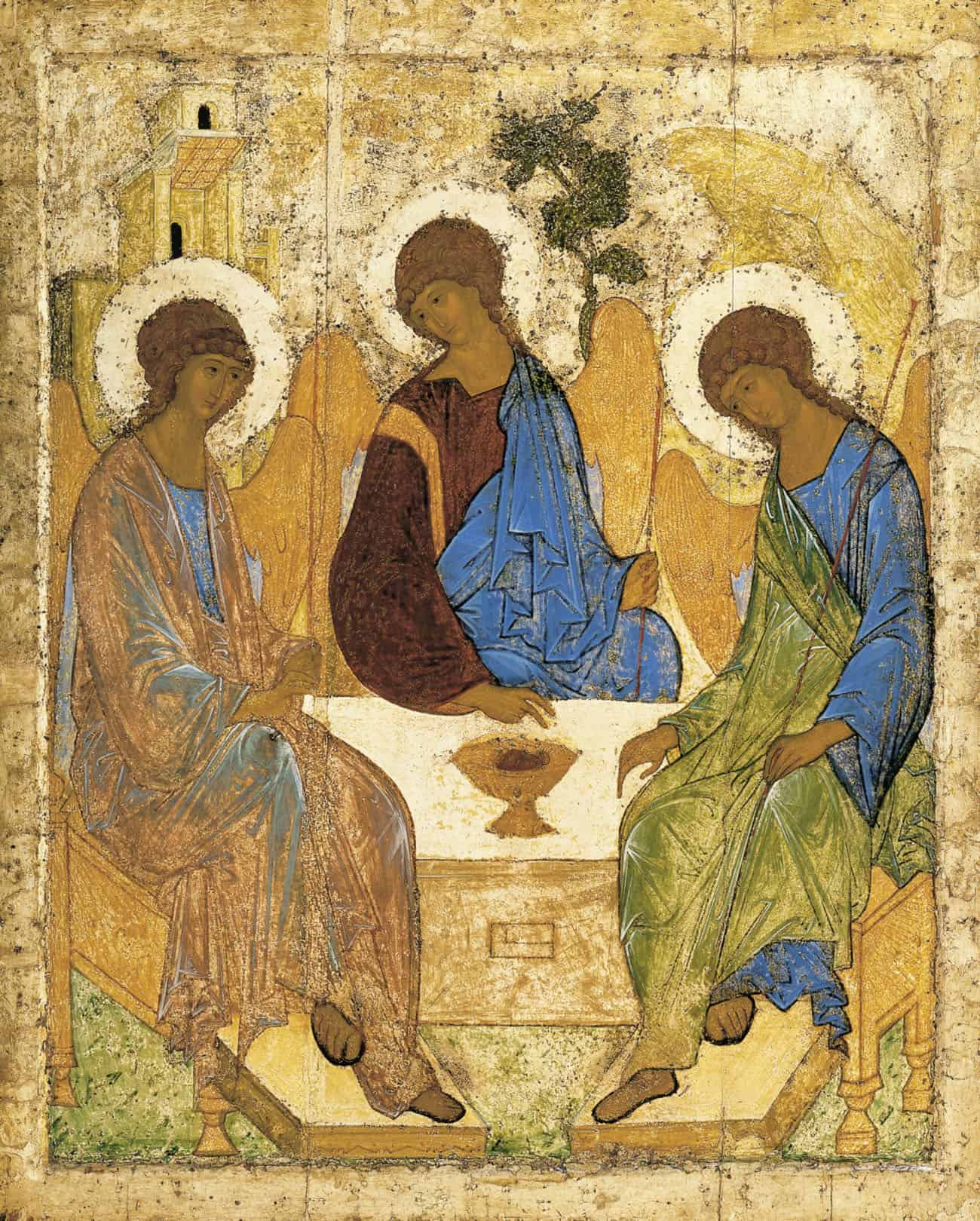If I were to mention the word “icon” to a younger person, especially one who has never entered a church, they might think of their smartphone before they think of prayer. These small graphical representations are ubiquitous, helping a person quickly access their phone’s basic functions, be it sending a message to friends or watching the latest viral challenge. I click the black and white musical note resembling a lowercase “d” with a looped, curling tail, and I am brought to Tiktok… I mean, if I watched Tiktok.
On the surface, these icons have almost nothing to do with the sacred images painted with tempera or carved into wood. You will be familiar with icons if you have ever been to an Eastern Orthodox church. However, they are also used in Eastern Catholic churches and even, sometimes, in Roman Catholic churches. A figure, perhaps Jesus, Mary, or some other saint stands, dignified and solemn, with a halo signifying their connection to the Divine, that is to say to God. The figure’s eyes are open, looking at you straight on, and it is no longer you observing the icon but the icon observing you. The background, often gilded, alludes to the heavenly realm. Inscriptions in Greek may identify the person. In addition to human figures, there are icons of church holy days and biblical events, such as Andrei Rublev’s famous depiction of the hospitality of Abraham.
Religious art in the Catholic tradition is a rich and diverse form of artistic expression that has evolved over centuries. It serves as a powerful tool for conveying religious stories, beliefs, and messages to the faithful. Icons have long been a staple of religious art in the Christian East, and there are many artistic schools that have been faithfully preserving the traditions around creating them. Icon writers, as they are called, maintain strict protocols of prayer and fasting as they produce the icon. More recently, artists in the so-called West have attempted to bend the canonical rules of icon writing with modern imagery and address contemporary subjects, not without controversy.
Yet, if we try to reduce the icon to mere art, we risk missing the point. Icons are not meant to be like other paintings, which might be hung in a gallery and observed from a distance. For Eastern Christians, both Orthodox and Catholic, the icon is an integral component of worship, a worship that is embodied in the various liturgies that are held in the Churches’ year. On the first Sunday of Lent in the East, for example, the entire assembly processes through the church, and sometimes outside too, with icons in hand, chanting hymns of victory over the iconoclasts of the 8th and 9th centuries.
The icon is not only used in communal worship, however; it is often employed in personal prayer. A woman or man, upon entering an Eastern Christian church, will often approach an icon of Jesus or Mary, light a candle, and say a prayer. This prayer might be a recited prayer they learned as a child, such as the “Our Father” or a personal prayer, the words coming extemporaneously from the person’s heart. At other times, the prayer has no words, and the person merely dwells in the silent presence of God. In this way, the icon is a helpful means by which God makes God’s self manifest to the person praying.
There are no special techniques that a person needs to do when they are praying with an icon, though it is customary to reverence the image. We treasure these icons, as we would treasure an old photograph of a grandparent or a friend no longer with us. Eastern Christians also frequently kiss icons. However, this is not required or necessary, and if you are sick or afraid of transmitting an illness, you could just touch the icon with your fingers before venerating it. If you go to an Eastern church, doing the following will help you blend in: approach the icon, do a half bow, then a deep bow while making the sign of the cross two times, the kiss the icon, and finally make a third bow.
Eastern Christians also keep icons at home, often arranging them in a prayer corner facing east. The icons can be arranged to match an iconostasis or icon screen as you would see at the church. Such an arrangement would have an icon of Jesus on the right and Mary on the left with John the Baptist to the right of Jesus and the person or family’s patron saints to the left of Mary. Of course, you can also add icons of saints to which you have a special devotion.
Those interested in praying with icons will no doubt go on to read more articles, and some of them may use language that is mystical or esoteric. With all due respect to those articles, it is my hope to show the ordinariness of such prayer. After all, icons began pragmatically, in part, to evangelize to the illiterate and uneducated. And to those who have grown up in the Eastern Churches, the icons are neither exotic nor severe. Praying with them is like joining a video call with a group of relatives or close friends. In that way, the comparison to the smartphone is apt. After all, what is a smartphone but a communication device that allows us to connect to people not physically in front of us. If we approach the icon with the same perspective, in all faith and humility, we will no doubt receive many spiritual blessings.
For Further Reading:
Behold the Beauty of the Lord: Praying With Icons by Henri J. M. Nouwen
Drawing Closer to Christ: A Self-Guided Icon Retreat by Joseph Malham
Praying with Icons by Jim Forest
The Mystical Language of Icons by Solrunn Nes


